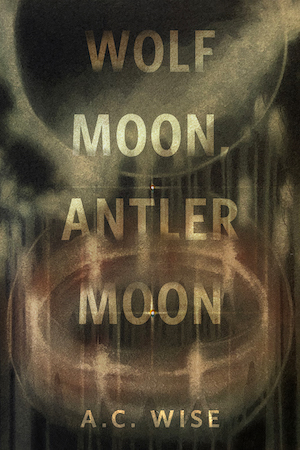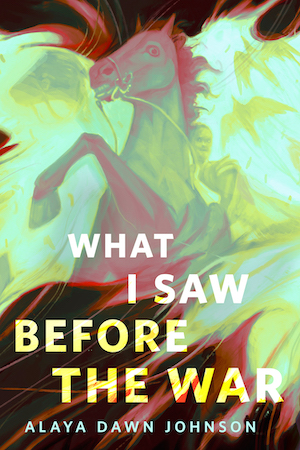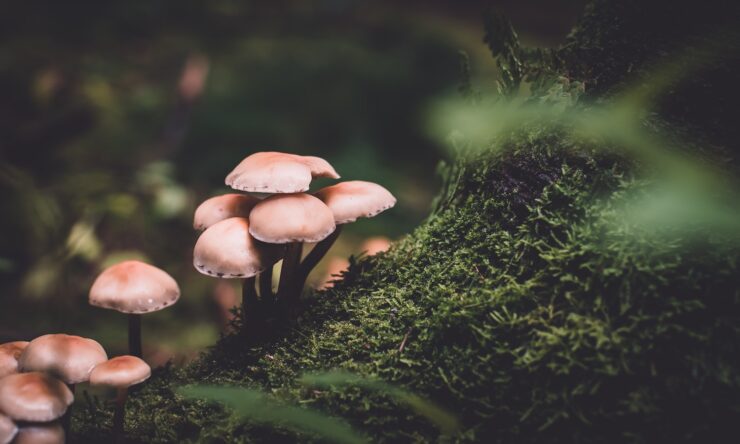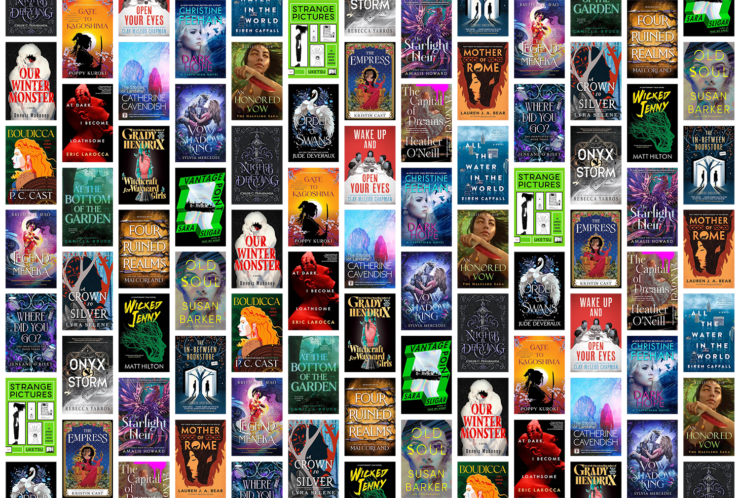Mushrooms are having a moment right now. I don’t mean that in a “they’re a tasty addition to a meal” kind of way; rather, mushrooms have long been an insidious presence in horror fiction, and in recent years they’ve slowly crept their way out of the shadows and into the spotlight. If your first thought when it comes to mushrooms conjures up images of cheery red toadstools with white polka dots—the kind that a fairy or Smurf might want to live in—try again. (Those mushrooms are commonly known as fly agaric, by the way, and are actually hallucinogenic and poisonous.) Instead, think of rot and decay, of infectious spores and creeping mycelia.
The term “sporror” (spore horror) has been gaining traction lately, but while the term is newly coined, the subgenre has been festering away for many years. Here are seven unsettling stories about frightening fungi sure to creep their way into your subconscious…
What Moves the Dead (2022) by T. Kingfisher
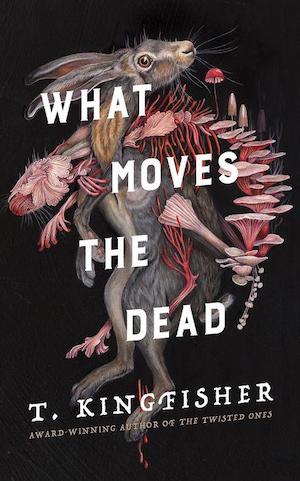
What Moves the Dead is an inventive retelling of Edgar Allan Poe’s 1839 short story “The Fall of the House of Usher.” Kingfisher’s protagonist is Alex Easton, a non-binary retired soldier, who, like Poe’s unnamed narrator, receives a letter detailing the declining health of their friend, Madeline Usher. Madeline and her brother Roderick live in the countryside in their large ancestral home, which has definitely seen better days. It’s dark, decrepit, and dingy—in other words, the perfect setting for a spooky Gothic tale.
The state of the house and Madeline’s sickness aren’t the only things that set Alex on edge, though. The animals in the area are behaving oddly and a disturbing mushroom infestation has taken hold around the Usher estate. Poe’s story has a fascination with fungi and decay, but Kingfisher takes this to another level, both in terms of stomach-churning description and in its importance to the plot. Readers with little to no knowledge of the original story won’t feel shut out as What Moves the Dead effectively stands on its own, while fans of Poe can appreciate not only the similarities to the source material, but also the ways in which Kingfisher satisfyingly fleshes out the story, twisting the tale and making it her own.
The Girl With All the Gifts (2014) by M. R. Carey
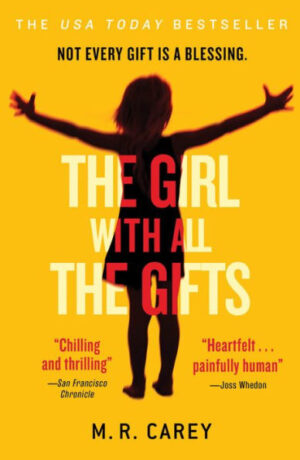
Ophiocordyceps unilateralis, better known as the zombie-ant fungus or just Cordyceps, mutates and becomes a threat to humanity in both The Last of Us (check out this list for more TLOU-related book recommendations) and The Girl With All the Gifts. In M.R. Carey’s novel, the vast majority of the population have turned into “hungries,” essentially mindless flesh-eaters. But there are a small number of children who have somehow retained their intelligence despite being infected. The British government (well, what’s left of it) has set up a base to study the children in order to figure out the scientific explanation behind their mutation and develop a cure.
The story follows 10-year-old Melanie, who is the brightest of the bunch but isn’t really aware of what she is or what’s happening in the outside world. All of that changes when the base is attacked and Melanie and a small group of staff are forced to take to the road. What follows is a perfectly balanced mixture of high-stakes zombie chomping action and philosophical questioning of the limits of humanity, in both a biological and moral sense.
If you’re hungry for more then there’s also a 2016 film adaptation of the novel and an equally thrilling and scientifically driven prequel novel, The Boy on the Bridge (2017).
“Spores” (2014) by Seanan McGuire
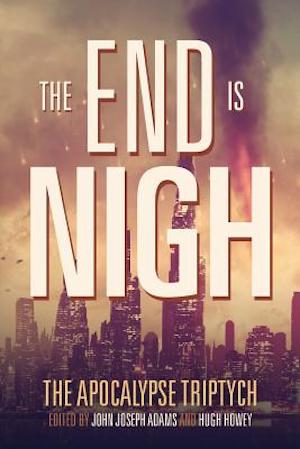
“Spores” was originally written for the anthology collection The End Is Nigh (2014), which imagines various coming apocalypses. Seanan McGuire’s contribution follows Megan, a scientist with OCD who works at a biotech firm. She’s in charge of making sure that nothing nasty resulting from the research of the other scientists has the chance to escape the lab and it’s a job she’s good at. But when Megan returns home to her wife, Rachel, she notices that some fruit that had been just been bought yesterday is already covered in a thick layer of fuzzy mold…
Rapidly growing mold isn’t a good sign in a collection of stories about imminent apocalypses, so it’s clear that simply throwing out the bad fruit isn’t the solution to this fungal problem. Let’s just say that after finishing this story you’ll be cleaning down your whole kitchen and eyeing your produce suspiciously. Readers can find out what happens next in “Fruiting Bodies,” from the anthology The End Is Now (2014), and “Resistance,” from The End Has Come (2015).
“The Voice in the Night” (1907) by William Hope Hodgson

There are plenty of dangers to be found at sea: your ship could hit an iceberg and sink, a shark could take a bite out of you, or a huge kraken might rise out of depths and swallow you whole. One thing most people don’t tend to fear when sailing the briny deep is mutagenic mushrooms. A read of William Hope Hodgson’s “The Voice in the Night” will change that.
First appearing in Blue Book magazine in 1907, Hodgson’s short story starts in the middle of the night with a small rowboat approaching a ship. The passenger in the boat refuses to come into the light and asks the two sailors aboard to put out their lantern and throw down some food. It seems strange, but the sailors agree to this request and in return the unseen passenger tells them his unfortunate tale of fungal growth on the high seas. It’s as tragic as it is eerie.
The story has been adapted a few times, most notably it inspired the Japanese film Matango (1963), directed by Ishirô Honda, who also directed and co-wrote the original Godzilla (1954) and many of its sequels.
Mexican Gothic (2020) by Silvia Moreno-Garcia
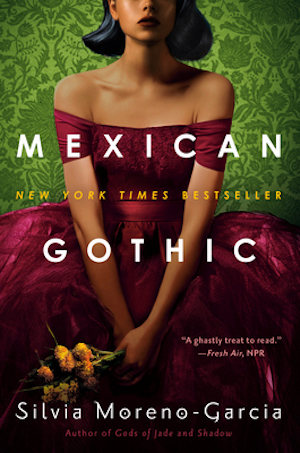
When Noemí receives a distressing and cryptic letter from her newlywed cousin she immediately sets off to visit her at High Place, a grand house in the Mexican countryside that is going to rack and ruin. She receives a chilly welcome, but with her cousin Catalina sickly and clearly in danger, it’s up to Noemí to discover just how deep the rot runs.
Mexican Gothic has all the trappings of a classic Gothic novel, as is to be expected from its title. There’s a mystery to unravel, something dark and supernatural seems to be lurking in the shadows, and everything is drenched in a thick atmosphere of gloom. Into all of this spookiness, Silvia Moreno-Garcia skillfully weaves probing discussions of racism, colonization, patriarchy, and exploitation of the poor and working class. Although the novel initially reads like a typical haunted house story, the fact at it’s been included on this list tells you there’s something else going on, but you should read the book to uncover the answers for yourself. All you need to know is that the walls are moldy, there’s mushrooms in the graveyard, and something strange is most definitely afoot at High Place.
“Gray Matter” (1973) by Stephen King
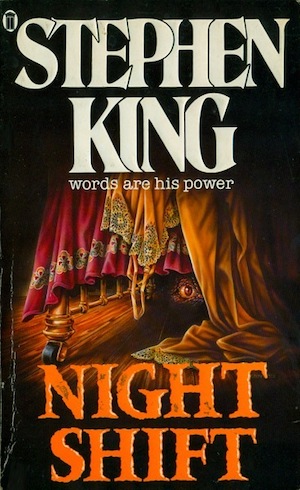
Set during a snow storm, “Gray Matter” begins with a group of men chatting in a convenience store. A boy called Timmy comes in to buy beer for his alcoholic and reclusive dad, Richie, but confesses to the shop owner, Henry, that he’s too scared to go home. Leaving the boy at the store, Henry sets out with two others to confront Richie—on the way, he fills them in on what the terrified boy had told him.
Richie had apparently begun to change a few months earlier after drinking a bad can of beer. The tension builds as the trio grimly make their way through the storm to the apartment to discover what exactly he has changed into…. Expect disgusting descriptions of slimy gray fungal matter, as well as a piece of flash fiction embedded within the short story about a spider the size of a dog (thanks for the nightmares, Stephen). You’ll come away with two very important lessons: don’t drink bad beer and don’t go into sewers (King’s It (1986) serves as further proof of that, for those that need extra convincing).
“Gray Matter” was first printed in Cavalier magazine and was then included in King’s Night Shift (1978) a few years later. The story was adapted for TV in 2019, kicking off the first season of Shudder’s anthology series Creepshow.
“Come Into My Cellar” (1962) by Ray Bradbury
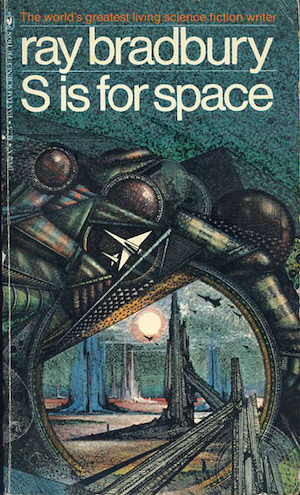
When most people think of aliens invading Earth they tend to imagine vaguely humanoid (or at least animalistic) creatures arriving in spaceships. In “Come into My Cellar”—sometimes titled “Boys! Raise Giant Mushrooms in Your Cellar!” (which is way more fun, honestly)—Ray Bradbury imagines a very different, more mushroom-y breed of extraterrestrial visitors. The story kicks off with a package of fast-growing mushrooms arriving for a young boy called Tom; as his mushrooms sprout and flourish, his dad’s suspicion that not all is right with the world grows right along with them.
“Come into My Cellar” was first published in Galaxy magazine and can be found in numerous Bradbury collections, including S is for Space (1966), The Machineries of Joy (1964), and The Stories of Ray Bradbury (1980). Before it appeared in print, a version of the story was broadcast as an episode of Alfred Hitchcock Presents, titled “Special Delivery” (1959). It was also adapted as an episode of The Ray Bradbury Theater in 1989.
***
Have I missed any great tales involving sinister mushrooms or menacing molds? Drop your own favorite fungi stories in the comments below!
Lorna Wallace has a PhD in English Literature and is a lover of all things science fiction and horror. She lives in Scotland with her rescue greyhound, Misty.




